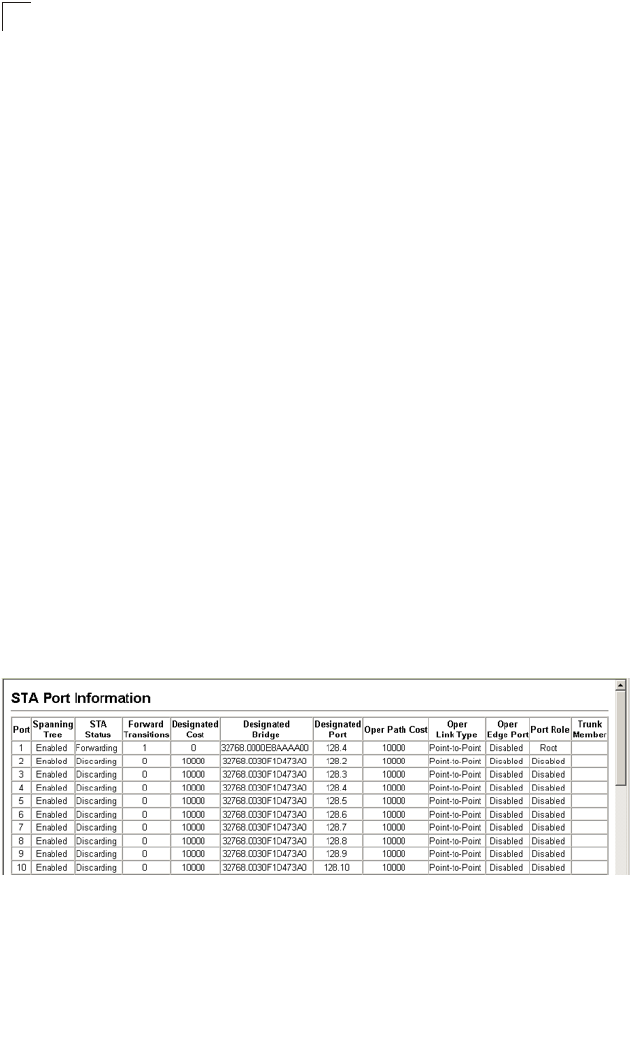
Configuring the Switch
3-126
3
• Internal path cost – The path cost for the MST. See the preceding item.
• Priority – Defines the priority used for this port in the Spanning Tree Algorithm. If
the path cost for all ports on a switch is the same, the port with the highest priority
(i.e., lowest value) will be configured as an active link in the Spanning Tree. This
makes a port with higher priority less likely to be blocked if the Spanning Tree
Algorithm is detecting network loops. Where more than one port is assigned the
highest priority, the port with the lowest numeric identifier will be enabled.
• Designated root – The priority and MAC address of the device in the Spanning
Tree that this switch has accepted as the root device.
• Fast forwarding – This field provides the same information as Admin Edge port,
and is only included for backward compatibility with earlier products.
• Admin Edge Port – You can enable this option if an interface is attached to a LAN
segment that is at the end of a bridged LAN or to an end node. Since end nodes
cannot cause forwarding loops, they can pass directly through to the spanning tree
forwarding state. Specifying Edge Ports provides quicker convergence for devices
such as workstations or servers, retains the current forwarding database to reduce
the amount of frame flooding required to rebuild address tables during
reconfiguration events, does not cause the spanning tree to reconfigure when the
interface changes state, and also overcomes other STA-related timeout problems.
However, remember that Edge Port should only be enabled for ports connected to
an end-node device.
• Admin Link Type – The link type attached to this interface.
- Point-to-Point – A connection to exactly one other bridge.
- Shared – A connection to two or more bridges.
- Auto – The switch automatically determines if the interface is attached to a
point-to-point link or to shared media.
Web – Click Spanning Tree, STA, Port Information or STA Trunk Information.
Figure 3-69 STA Port Information


















